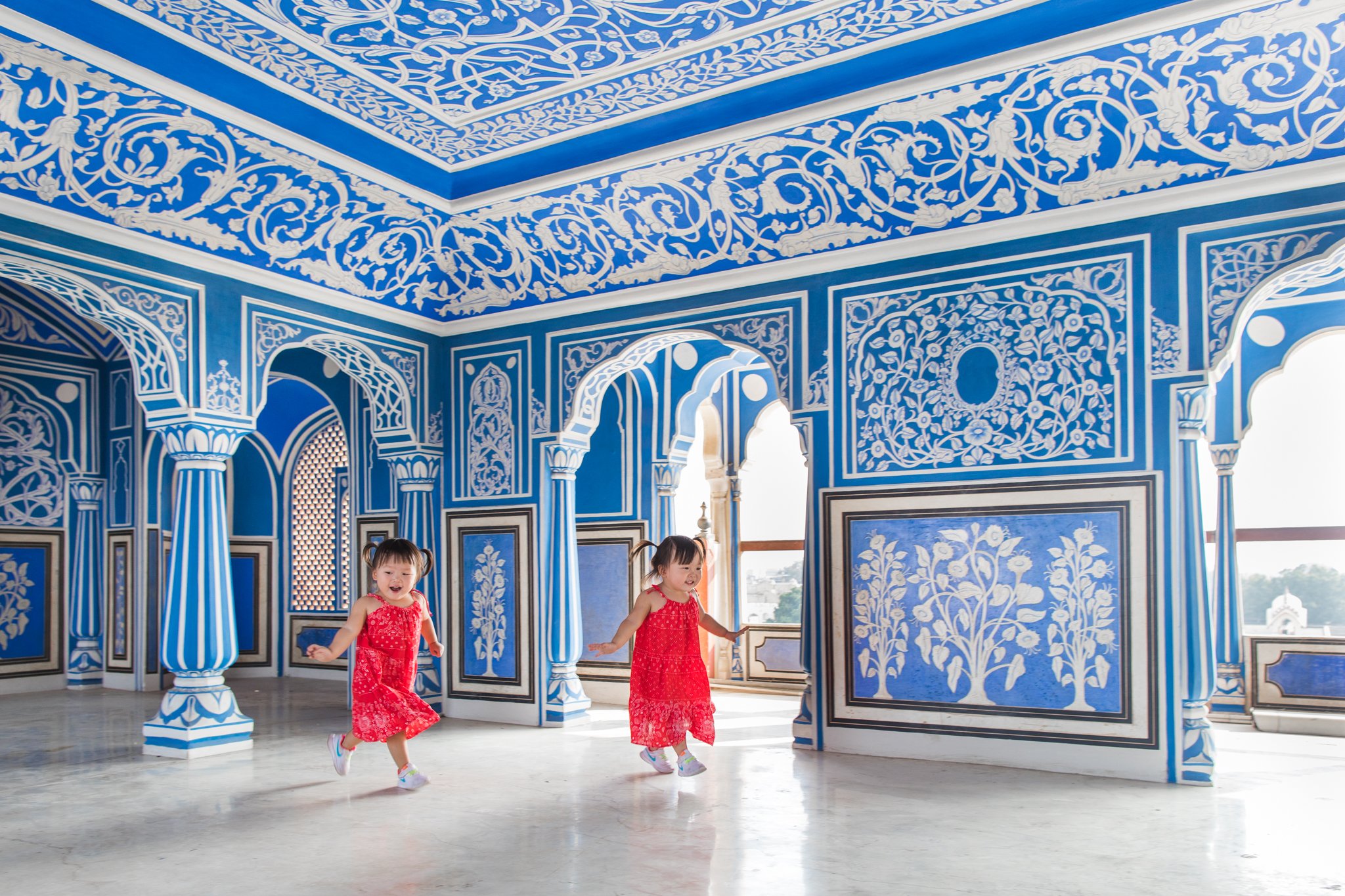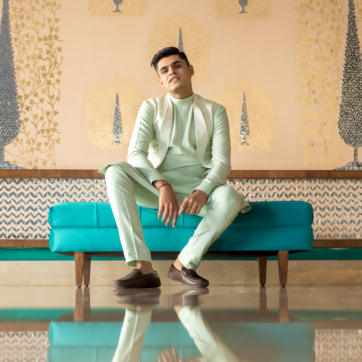
Full of magnificent architecture, Jaipur is a time traveller’s dream. A tour of the city can conjure up vivid images of its exciting past. Founded by Maharaja Sawaii Jai Singh in the 18th century, Jaipur- the city of pink sandstone glitters gloriously even today. Every walk through bustling bazaars and quaint alleys makes people fall more in love with the city. But one architectural gem that remains very clearly etched in most people’s memories is the beautiful City Palace. It is a stunning confluence of Rajput, European and Mughal architectural styles. If you are planning to travel to Jaipur, this is one spot you mustn’t miss. The palace compound has many units in whose beauty you can lose yourself. Here’s a quick peek-
1. Mubarak Mahal
Mubarak Mahal is the mesmerizing reception center that greets visitors as they walk into the palace compound. Built by Maharaja Madho Singh II in the late 19th century, the Mahal seamlessly weaves together Islamic, Rajput, and European building styles. Today, it houses a museum showcasing a vibrant and diverse selection of textiles including royal garments, elaborately embroidered shawls, Kashmiri Pashminas, Sanganeri block prints, and silk sarees- a treat for any art enthusiast.
READ: 15 Most Powerful Young Women Of Jaipur
2. Chandra Mahal
Also called Chandra Niwas, this splendid marvel is nestled in the Palace’s inner courtyard. Ensconced by sprawling lush gardens, and a glittering lake, this one is a must see! The seven-level wonder houses the descendants of the former rulers of Jaipur, with the ground floor serving as a museum that displays carpets, manuscripts, and other possessions of the royal family. A cool fall day is the best time for a visit. Or, literature aficionados can take time off from the Jaipur Literature Festival and spend a day exploring the palace.
3. Pritam Niwas Chowk
At Pritam Niwas Chowk, thematically designed gates, portraying the four seasons and various Hindu gods, welcome visitors into the inner-courtyard of the compound. The four gates- the Northwest Peacock gate patterned with peacocks on the door symbolizing autumn, dedicated to Vishnu, the Southwest Lotus Gate adorned with intricate floral patterns welcoming summer, and Shiva and Parvati, the Northwest Green gate or Leheriya gate, green to welcome spring for Ganesha, and the Rose gate with its rich wreathed patterns representative of winter and Devi- are each a delight to behold.
4. Diwan-I-Khas
Diwan-i-Khas is an ornamented marble chamber used earlier as a private audience hall for the Maharajas of the past, now houses the famous Gangajalies. The enduringly beautiful crystal chandeliers are a testament to the glorious evenings the chamber has witnessed.
5. Diwan-I-Aam
Often called Sabha Niwas, this hall is a vibrant space with bright ceilings, royal fabrics, and an art gallery with exquisite miniatures of Rajasthani, Mughal and Persian art, embroidered rugs, and Kashmiri shawls and carpets. The Takth-e-Rawal strikes awe into the hearts of all those who see it, taking visitors back centuries together. Visit for the stunning displays, and the imposing architecture.
6. Maharani Palace
As the name suggests, Maharani Palace is the residence of the queens of the royal family. Today it is a museum that showcases the various weapons used in battle. The most eye-catching thing, however, is the exciting frescoes across the ceilings. War buffs, don’t miss this one!
7. Bhaggi Khana
Bhaggi Khana is a museum housed in City Palace, that shows off carriages, palanquins, and European cabs- including one that was presented to the family in 1876 by the Prince of Wales. The sight of all the different baggis is enough to carry anyone back to 18th century Jaipur in just the blink of an eye!
READ: 10 Luxury Jewellery Designers Of Jaipur That Will Make You Fall In Love With Their Designs
8. Govind Dev Ji Temple
Govind Dev Ji Temple is a shrine honoring Krishna. Constructed in the 18th century, this unique shrine has European chandeliers, alongside Indian art pieces. The gold ceilings make the shrine even more stunning.
9. Baradari
It wouldn’t be surprising if after having chilled where the royal family used to, you want to relax in a luxurious setting too. Well, you don’t need to go too far way- Baradari, a really cool joint, is situated right inside City Palace. The beautiful interiors are welcoming, but if you prefer the good old outdoors, lovely outdoor seating will allow you to enjoy that as well. The artificial waterfall and pond situated within the premises only add to the experience of dining in the City Palace. A pitcher of their lovely peach iced tea is the best thing after a long day of exploring.
—
If these attractions have convinced you to plan a trip, here are a few things to keep in mind:
- Tickets for Indians cost 100INR, and for non-nationals, they cost 400 INR.
- For a guide, you need to pay 300INR, and the Royal Grandeur Tour will cost you 2500INR.
- You can visit any time between 10 AM and 5 PM, and on any day except national holidays, and a few gazetted one.
- It’s best to plan trips during the pleasant months of October to March.
- Another exciting time to visit is during the Jaipur Literature Festival when the whole city is abuzz with infectious joy. You can enjoy the stimulating festival at the beautiful Diggi Palace while also exploring Jaipur.
- July to September is great for those who don’t mind the rains. Basically, if you avoid the summer months, any other time is just perfect for a magical getaway. So, get cracking and book your tickets today.
Does this article inspire you? Don't forget to share your experience of visitng the beautiful City Palace of Jaipur.











Join The Conversation